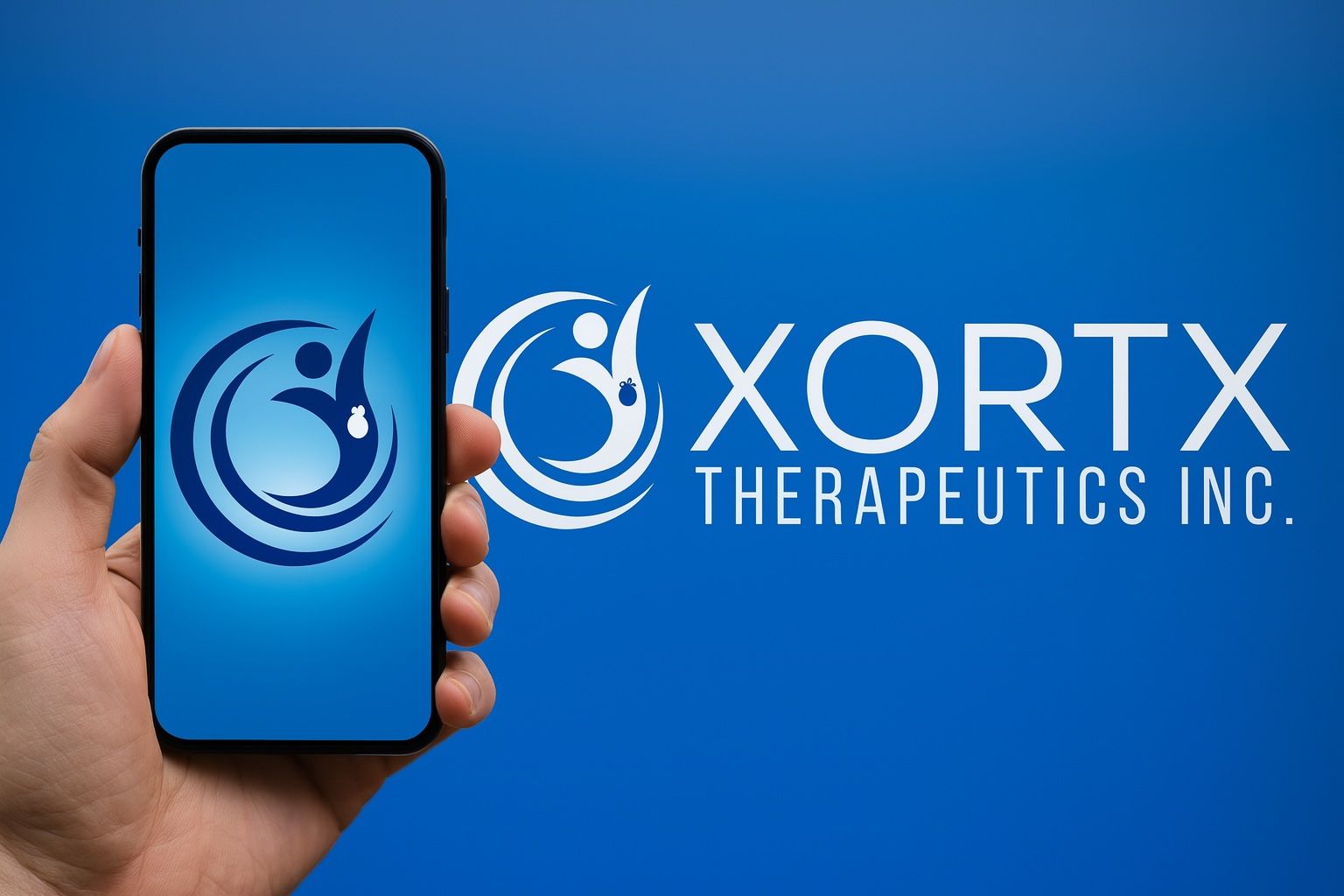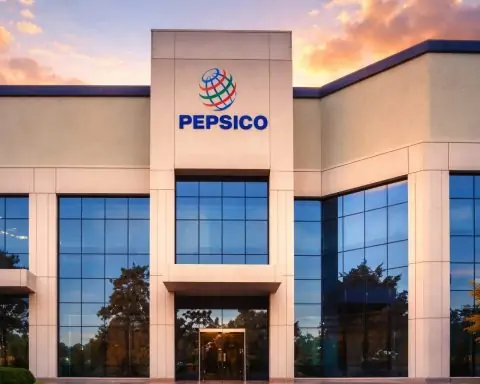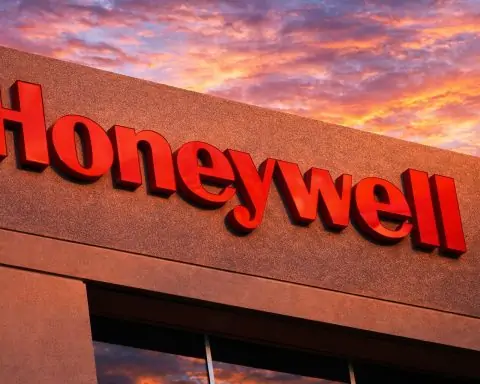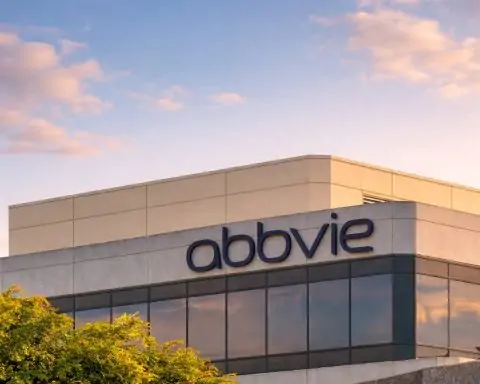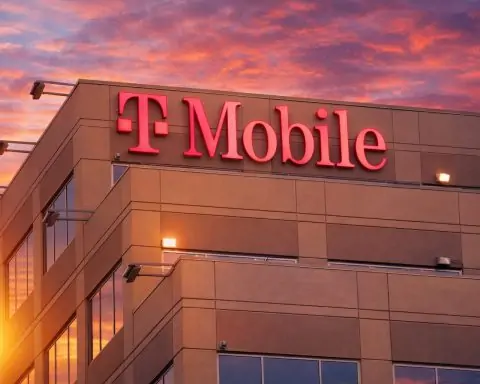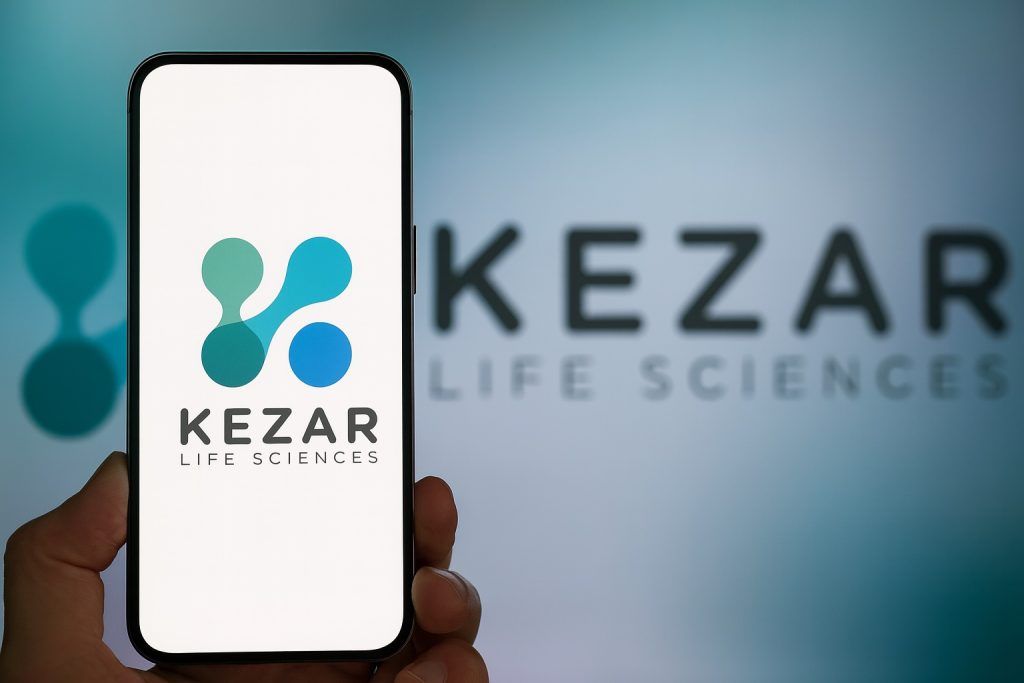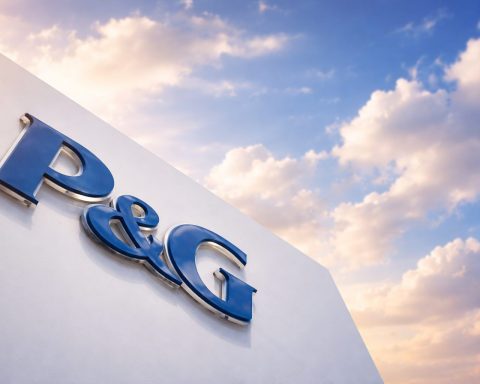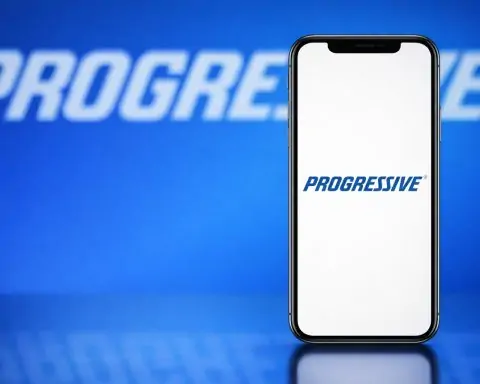- Stock Soars: XORTX Therapeutics’ share price jumped as much as 40% intraday on Friday, October 17, 2025, peaking just above $1.20, before closing up ~21% for the day around the mid-$1 range [1] [2]. This surge came on unusually heavy trading volume of about 7 million shares, far above its ~44,000 three-month daily average [3]. Despite the rally, XRTX remains down ~25% year-to-date and ~55% over the past 12 months [4].
- Micro-Cap Biotech: Even after the spike, XORTX is a micro-cap biotech with a market capitalization around $4.5 million USD [5]. The tiny valuation highlights both the high risk and high reward nature of the stock.
- Deal Announcement: The stock jump was triggered by XORTX’s announcement of a deal to acquire a new kidney disease drug program. The company is buying the renal anti-fibrotic therapeutic program “VB4-P5” from Australia’s Vectus Biosystems for $3 million, to be paid in XORTX shares (at a deemed price of ~$0.86 each) [6]. The program is in pre-IND stage (pre–FDA trial) and aims to treat kidney fibrosis (organ scarring) in both rare and common kidney diseases – an area of significant unmet medical need.
- Kidney Disease Focus:Kidney fibrosis is a key driver of chronic kidney disease progression and currently no approved therapies exist to reverse or directly treat such scarring [7]. Early preclinical data for VB4-P5 show promise in inhibiting and potentially reversing kidney fibrosis, and the compound has broad patent protection across 30+ countries [8]. XORTX’s CEO called the acquisition a “highly compelling” opportunity that aligns with the company’s mission to develop innovative treatments for progressive kidney disorders [9].
- Company Pipeline: XORTX Therapeutics (based in Calgary, Canada) is a clinical-stage pharmaceutical company focused on gout and kidney diseases [10]. Its existing pipeline includes XRx-026 for gout, XRx-008 for autosomal dominant polycystic kidney disease (ADPKD), and XRx-101 for acute kidney injury in viral infections [11]. The firm also has a preclinical program for diabetic kidney disease. Just last month, XORTX announced it is preparing to file an IND (investigational new drug application) for its XORLO™ gout treatment program [12], indicating progress on other fronts even before this new deal.
- Analyst & Expert Reaction: Market commentators note that bold moves by small biotechs to address large unmet needs can lead to sharp rallies, as seen with XORTX’s news [13]. The acquisition sparked optimism that XORTX could tap into a multi-billion-dollar kidney disease market if the drug succeeds. However, experts caution that VB4-P5 is still at an early stage – it will require clinical trials and regulatory approvals before any potential FDA green light. One analyst warned that “biotech’s got teeth” – the path from lab success to pharmacy is uncertain, and XORTX’s stock remains highly volatile [14]. The $3M stock-based payment will also dilute shareholders, a common risk as the company raises funds for R&D. In short, while the news is encouraging, investors should temper excitement with the understanding that significant hurdles remain.
- Broader Context: XORTX’s surge comes amid a mixed backdrop for biotech stocks. U.S. biopharma shares have struggled in recent months and are trading at historically low valuations [15], as rising interest rates and risk-off sentiment made funding harder for small caps. This means positive catalysts now stand out even more – in fact, several small biotechs saw outsized gains in the same week on favorable news. For example, Kezar Life Sciences shares jumped ~37% after a strategic update [16], and Achieve Life Sciences spiked ~27% upon receiving an FDA priority voucher [17]. Investors are rewarding biotech breakthroughs, but the sector overall is still waiting for a sustained turnaround. Analysts note that factors like clearer regulatory pathways or potential Fed interest rate cuts in late 2025 could help spark a broader biotech rebound [18].
XORTX Stock Price Skyrockets on Acquisition News
Shares of XORTX Therapeutics Inc. (NASDAQ: XRTX) surged on October 17, 2025 after the nano-cap biotech announced a strategic acquisition in its core therapeutic area. The stock rocketed up immediately following the morning press release, spiking up to 40% in early trading. By midday, XRTX was changing hands at just over $1.20 per share (up from around $0.86 the prior day) [19]. It eventually closed about 21% higher on Friday [20] – a dramatic move for a company that had been trading quietly near the $1 level.
This rally was accompanied by an explosion in trading volume. More than 7 million XRTX shares had traded by afternoon [21], compared to an average daily volume of under 50,000. The buying frenzy suggests that news of the deal drew attention from investors who normally overlook such micro-cap stocks. Prior to Friday, XORTX’s market capitalization was roughly $4–5 million [22], making it one of the smallest publicly traded biotechs. (For perspective, American Association of Individual Investors noted XORTX’s market cap put it in the bottom 1% of pharmaceutical companies by size.) Even after the surge, the company is valued at only around $5 million, highlighting the high-risk, high-reward nature of the stock.
Notably, XRTX has had a rough year until now – even with the one-day pop, the stock is still down about 24–25% year-to-date and more than 50% lower than a year ago [23]. XORTX has struggled to attract investor interest in recent months, partly due to broader sector headwinds (discussed below) and its need to maintain compliance with Nasdaq’s minimum share price rules. The sudden jump on October 17 therefore marks a stark reversal of fortune, at least for the moment, as the company’s latest announcement put it on traders’ radar.
New Kidney Drug Program Acquisition Fuels Optimism
The catalyst for XORTX’s spike was an announcement that the company is acquiring a novel therapeutic program for kidney disease. In a press release Friday morning, XORTX revealed a binding agreement to purchase the “VB4-P5” Renal Anti-Fibrotic Program from Vectus Biosystems, an Australian biotech [24]. VB4-P5 is a small-molecule drug candidate that is not yet in human trials but has shown promise in preclinical studies for treating renal fibrosis – essentially scar tissue buildup in the kidneys.
Under the deal terms, XORTX will pay Vectus $3.0 million USD, and notably, this payment will be made entirely in XORTX equity (common shares or equivalents) [25]. The shares are to be issued at a “deemed” price of $0.86 each [26], which was roughly XRTX’s market price before the news. This suggests about 3.5 million new shares will be issued to Vectus, though the final number could adjust slightly based on regulatory rules (the price cannot go lower than the last TSX Venture closing price per the agreement). Vectus agreed to lock-up these shares for 180 days after the deal closes, meaning they won’t immediately sell into the market [27]. The transaction is expected to close within 90 days, pending typical conditions like final due diligence, regulatory approvals, and stock exchange sign-offs [28].
Why the excitement about VB4-P5? This program targets a fundamental problem in chronic kidney disease: fibrosis, or scarring of kidney tissue. According to XORTX, chronic kidney disease (CKD) affects roughly 14% of adults worldwide, including 35–37 million people in the U.S. alone [29]. In many of these patients – as well as those with certain rare kidney disorders like ADPKD (polycystic kidney disease) or lupus nephritis – progressive fibrosis is what causes the kidneys to lose function [30]. Currently, doctors have no approved therapy that directly targets or reverses kidney fibrosis [31]. Treatment is limited to managing symptoms (e.g. controlling blood pressure and diet) and, in end-stage cases, dialysis or transplant. A drug that could prevent or even undo fibrotic kidney damage would be a game-changer for millions of patients.
XORTX and Vectus have highlighted early data indicating VB4-P5 might do exactly that. Preclinical (lab and animal) studies suggest this potent molecule can inhibit the fibrotic process and possibly even reverse existing kidney scar tissue [32]. Moreover, Vectus has secured strong intellectual property protection for VB4-P5: there are composition and method-of-use patents covering the drug across 30+ countries [33]. This gives XORTX confidence that if the drug works, it will have a wide moat (i.e. exclusive rights) to commercialize it globally.
XORTX’s CEO, Dr. Allen Davidoff, praised the deal, stating: “The opportunity to acquire the VB4-P5 program was highly compelling. This program is underpinned by a novel, patented small molecule with robust global patent protection and strong preclinical evidence. It is directly aligned with our strategic focus on developing innovative therapies for progressive kidney disease, and it builds upon our mission to bring new classes of treatments to patients suffering from rare renal disorders.” [34]
In other words, management sees VB4-P5 as a natural fit for XORTX’s mission. The company’s specialty is pursuing therapies for kidney disease and conditions related to high uric acid. By adding an anti-fibrotic agent to its portfolio, XORTX broadens its attack on kidney disease: it could eventually offer treatments that not only address uric acid (its original focus) but also the downstream organ damage that causes kidney failure.
Investors likely cheered this move for a few reasons. First, the acquisition expands XORTX’s pipeline at relatively low cost – $3 million in stock is a modest price for a program that, while early, addresses a huge medical need. It’s essentially an “asset purchase” that brings in a potentially valuable drug candidate without a large cash outlay (important for a cash-limited micro-cap). Second, it signals that XORTX is being proactive and “on the offense” despite its small size – acquiring rather than being acquired. Such bold strategic moves can instill confidence that management is seeking growth opportunities. Finally, the fact that Vectus was willing to take shares (and hold them for 6 months) may be seen as Vectus’s vote of confidence in XORTX and the combined program’s prospects.
Of course, it must be underscored that VB4-P5 is still in pre-IND stage. This means it hasn’t yet been tested in human clinical trials or even submitted to the FDA for permission to start trials. There is a long road ahead: XORTX will need to complete IND-enabling studies, file the IND, conduct Phase 1 safety trials, and later-phase efficacy trials if all goes well. That process could take years. But in the realm of biotech investing, the promise of a breakthrough is often enough to move a stock in the short term – especially for a tiny company where any added value is significant relative to the market cap.
XORTX’s Growing Pipeline and Recent Developments
Prior to this surprise acquisition, XORTX Therapeutics was already working on several fronts in the kidney and metabolic disease space. The company describes itself as a late-stage clinical pharmaceutical company focused on gout and progressive kidney disease [35]. While “late-stage” might be a stretch (none of its drugs have completed Phase 3 trials yet), XORTX does have multiple programs in or nearing clinical-phase development:
- XRx-026 (aka XORLO™) for gout: This is XORTX’s lead program targeting gout, a painful condition caused by excess uric acid. XORTX’s approach likely involves novel formulations or mechanisms to lower uric acid (possibly through xanthine oxidase inhibition, similar to allopurinol). In early September 2025, XORTX announced it has initiated preparations to file an IND for XORLO™ [36], a key step toward starting U.S. clinical trials. Gout remains an undertreated disease in some patients, especially those who cannot tolerate existing drugs, so XORTX aims to fill that niche.
- XRx-008 for ADPKD (polycystic kidney disease): ADPKD is a genetic disorder that causes cysts in the kidneys and leads to kidney failure over time. XORTX’s candidate XRx-008 is presumably intended to slow cyst growth or address the metabolic pathways (like uric acid buildup) that exacerbate this disease. The company has previously highlighted this program as part of its core pipeline [37].
- XRx-101 for acute kidney injury in viral infections: This program emerged during the COVID-19 era – many severe viral infections (like COVID-19) can cause acute kidney damage. XRx-101 is XORTX’s attempt to prevent or lessen organ injury in such scenarios, potentially by using agents that reduce uric acid or oxidative stress during viral illness [38].
- XRx-225 for diabetic nephropathy: Still in preclinical stage, XRx-225 is a discovery program aiming at kidney disease caused by type 2 diabetes [39]. Diabetic nephropathy is a leading cause of CKD, so this is another important target area, though XORTX has not publicized many details yet.
With the addition of VB4-P5, XORTX is rounding out its portfolio to tackle kidney disease from multiple angles: metabolic (uric acid) control, genetic disease (ADPKD), acute injury prevention, and now anti-fibrosis. The breadth of the pipeline is notable for such a small company. It suggests XORTX is positioning itself as a specialist in kidney health. In August 2025, the company provided a corporate update outlining its plans for 2025/2026, indicating an intense focus on advancing these programs through clinical milestones [40].
Of course, executing on all these fronts will require funding. XORTX has periodically raised capital – for instance, in May 2025 it announced a $3 million financing [41], and in June 2025 it raised an additional ~$925,000 in a private placement (according to MarketBeat/SeekingAlpha reports). The company likely has limited cash on hand, so investors anticipate more fundraising or partnerships will be needed to run clinical trials, especially after the VB4-P5 acquisition (which itself doesn’t bring cash, only an asset).
One challenge XORTX has faced is maintaining compliance with Nasdaq’s minimum bid price requirement (Nasdaq generally requires a $1.00 share price). XRTX shares have often traded below $1 for extended periods, prompting deficiency notices from Nasdaq. The company previously enacted a reverse stock split in late 2023 to boost its share price and in April 2025 received another notice of non-compliance. However, Nasdaq granted XORTX an extension (an additional 180 days) to regain compliance [42], a window that likely runs into early 2026. This means XORTX must get its stock back above $1 (for at least 10 consecutive days) or risk delisting to the OTC market. Ironically, the October 17 price jolt actually put XRTX above $1 again (at least temporarily), which could help its case if the stock can sustain those levels. It’s an interesting subplot: while the focus is on the science, the stock’s performance has real corporate consequences for XORTX’s Nasdaq listing status.
Analyst and Investor Commentary: Hype vs. Hurdles
The market’s reaction to XORTX’s news has been enthusiastic, but what are analysts and experts saying about the company’s prospects now? Given XORTX’s tiny size, it has limited formal Wall Street analyst coverage. No major investment bank currently publishes price targets or earnings estimates for XRTX. However, financial news outlets and independent stock commentators have weighed in on the development:
- Trading Community Buzz: On trading forums and platforms, XRTX quickly became a hot topic on Oct. 17. The massive volume (400x the norm) and 40% intraday jump caught the eye of many day traders. A RagingBull analyst noted the move “turned a sleepy Thursday into a ‘did I just see that?’ territory”, using the XORTX spike as an example of how quickly a small-cap biotech can explode on the right catalyst [43]. The sentiment among these high-risk investors was a mix of FOMO (fear of missing out) on a potential turnaround story and acknowledgment that such moves can be fleeting.
- Optimism on Addressing Unmet Need: Some commentators highlight that XORTX is targeting a genuinely significant medical need. Kidney disease with fibrosis is, as one writer put it, a “multi-billion-dollar headache” in healthcare, and “when a company like XORTX lands an acquisition that plugs right into a massive need, shares can shoot for the moon because investors smell potential.” [44] In other words, the market rewards companies that take bold steps to tackle big diseases, since any success could translate to outsized returns. XORTX’s news aligns with this narrative – it is aiming at a problem that affects millions and currently has no cure. This kind of storyline – small biotech with a possible breakthrough – often attracts speculative investment.
- Volume and Short-Term Interest: The fact that 7+ million shares traded on the news (versus ~8,000 the day before) indicates a lot of short-term trading interest entered the stock [45]. Some of this is likely momentum traders or algorithmic funds that scan for big percentage movers. TipRanks reported that “today’s news excited investors and triggered heavy trading of XRTX stock”, with the volume far above normal levels [46]. This can be a double-edged sword: while it provides liquidity and a higher price in the short term, these fast-money traders might exit just as quickly if momentum fades, leading to volatility.
- Expert Caution – “Not Out of the Woods”: Seasoned biotech analysts urge caution on extrapolating too much from a one-day pop. The VB4-P5 deal, while promising, is just the first step. “Labs aren’t pharmacies,” one expert noted pointedly [47] – meaning no matter how good the preclinical data looks, a drug must prove itself in human trials and pass regulatory scrutiny. The path ahead for VB4-P5 will involve significant risk at each trial phase. It could be years before we know if it actually benefits patients as hoped. Meanwhile, XORTX will be expending cash on this project, potentially stretching its thin resources. RagingBull’s analyst observed that XORTX is “burning cash on multiple fronts, so dilution from those new shares could pinch if things stretch out” [48]. The issuance of shares to Vectus, and the likelihood of additional fundraising, means existing shareholders will own a smaller percentage of the company unless XORTX’s moves truly increase the pie (i.e. lead to a much higher valuation down the road).
- Volatility Ahead: The volatility of XRTX was also emphasized. This stock has a history of whipsaw moves, and even on Oct. 17 it couldn’t hold the highest prices by the close. One day’s gain could be partially given back on the next piece of news (or lack thereof). Small biotechs are notorious for retracing after initial euphoria. Analysts advise interested investors to keep an eye on upcoming milestones – such as the formal closing of the Vectus deal (by early 2026) and progress on the IND filing for the gout program – as those events will determine if the recent optimism is justified. *“Not every spike sticks,” one commentator warned, “so always ask: Is this fluff or real progress?” [49]. In XORTX’s case, the consensus is that the news is real progress, but proof of success will come only with time and data.
It’s worth noting that on the retail investor forums, sentiment was mixed – some long-term followers of XORTX rejoiced that the company “finally got noticed” and expressed hope that this could mark the beginning of a turnaround, especially if XRTX can regain Nasdaq compliance and attract institutional interest. More skeptical voices argued this could be a “pump-and-dump” scenario, where the stock jumps on news but drifts down afterward, especially given the likely need for further financing. So far, there’s no indication of foul play – the news is legitimate and material – but how the stock performs in the weeks after will be telling.
Broader Biotech Market Context
XORTX’s big day comes at a time when the biotech sector at large has been under pressure, and that context is important for understanding investor reactions. Through 2024 and into 2025, many biotech and pharmaceutical stocks – especially small and mid-cap ones – have lagged the broader market. “U.S. biopharma stocks have struggled in recent months,” noted Morgan Stanley in a September 2025 industry outlook, pointing out that valuations in the sector hit historic lows [50]. A combination of factors has been at play: rising interest rates (which make riskier, long-horizon investments like drug development less attractive), a pullback in venture funding and IPOs, and some high-profile clinical trial failures that dampened sentiment. Investors became quite risk-averse with early-stage biotechs, which is one reason XORTX’s stock was languishing near $1 prior to this week.
However, there are glimmers of a turnaround. With inflation easing by late 2025, there’s speculation that the U.S. Federal Reserve might begin cutting interest rates – an environment that historically benefits biotechs and other growth stocks [51]. Additionally, big pharmaceutical companies are once again hunting for acquisitions (given their cash reserves and need to refill drug pipelines), which helps lift the sector mood. Any whiff of positive news in a small biotech can now spark outsized gains, precisely because valuations are so beaten down. Investors don’t want to miss the next big thing, so to speak, and when a stock is priced for disaster, even modestly good news can re-rate it significantly upward.
In the week surrounding XORTX’s announcement, several other niche biotech names also saw explosive moves on news:
- Kezar Life Sciences (NASDAQ: KZR) – Another tiny biotech, Kezar’s stock soared ~37% in one day after the company announced a regulatory update on its autoimmune hepatitis program and plans to explore strategic alternatives (which often implies a sale or partnership) [52]. This shows how a single press release can dramatically change a micro-cap’s trajectory in the current market.
- Achieve Life Sciences (NASDAQ: ACHV) – Achieve’s shares jumped over 25% in a day after it won an FDA “priority review voucher” for its smoking cessation drug [53]. FDA vouchers are valuable assets, and that validation instantly boosted Achieve’s market value. Again, it underlines how regulatory wins or pipeline progress are being rewarded by investors hungry for good news.
- Carbon Revolution (NASDAQ: CREV) – Outside of biotech, small-cap moves are happening too; Carbon Revolution saw a big swing (20%+) after addressing a Nasdaq listing warning and hyping an EV technology strategy [54] (as covered by a ts2.tech piece). While not related to XORTX’s field, it’s indicative of the speculative fervor returning to pockets of the market.
For XORTX, the broader takeaway is that the biotech sector may be nearing a pivot point. As one industry expert put it, “Biopharma stocks are at historically low valuations, [but] a few factors point to a potential turnaround.” [55] If that turnaround materializes, quality small-cap biotechs could see sustained interest rather than one-day pops. On the other hand, if the overall market remains choppy and risk-averse, XORTX will need to keep delivering exceptional news to hold investor attention.
Investors will also be watching how XORTX’s peers in the kidney disease space are faring. The kidney therapeutics area has seen some notable developments in recent years (for example, the first FDA-approved drug for ADPKD came out a few years ago, and new gout drugs are in development). Any positive read-through from those areas could benefit XORTX sentiment as well. Conversely, if a competitor’s fibrosis drug fails a trial, it might temper enthusiasm for XORTX’s approach. As of now, XORTX stands relatively alone as a pure-play microcap in renal disease and gout, which could make it an attractive speculative bet if biotech sentiment improves.
Outlook: What’s Next for XORTX?
Following the excitement of Oct. 17, the key question is “What’s next?” for XORTX Therapeutics and its shareholders. In the immediate term, all eyes will be on the closing of the Vectus deal. The companies have given themselves up to 90 days to finalize the acquisition [56], which means by mid-January 2026 it should be wrapped up. Investors will want confirmation that everything proceeds smoothly – any hiccup or delay in closing could disappoint the market. Assuming it closes, XORTX will then integrate the VB4-P5 program and likely start work on preparing an IND for it (to get FDA permission for human trials). We might hear updates on that process in the coming quarters.
Another near-term catalyst (or risk factor) is Nasdaq compliance. XORTX must regain a sustained $1+ share price or risk delisting. The recent boost helps, but it needs to last. The company could consider another reverse split if necessary, though management likely prefers to avoid that by lifting the business fundamentals (and stock price) instead. Positive news flow and progress on existing programs (like actually filing the XORLO gout IND or announcing trial initiation in ADPKD) could help keep the share price buoyant.
By late November 2025, XORTX will also be due to report its Q3 2025 financial results (as a Canadian company reporting in U.S., it typically files a 6-K quarterly update). While financials for a pre-revenue biotech are usually uneventful, investors will parse the report for clues on cash runway (how much cash is left, given the recent activities) and any commentary from management on upcoming milestones. It’s possible the company will discuss how it plans to fund the development of VB4-P5 – whether through partnerships, grants, or further equity raises – which will be important information for shareholders.
In terms of the longer-term outlook, much hinges on execution. If XORTX can advance one or more of its programs into late-stage trials successfully, the upside could be substantial. The total addressable markets are large (gout affects ~9 million in the US alone; CKD tens of millions worldwide; ADPKD tens of thousands of patients, etc.). Even a small slice of those markets could justify a valuation far above $5 million. Bulls argue that XORTX has multiple “shots on goal” with its diversified pipeline – any single success (be it the gout drug or the fibrosis drug) could transform the company’s fortunes.
On the flip side, risks abound. Small biotechs like XORTX face scientific risk (any of the drugs could fail to show efficacy or safety), regulatory risk, financial risk (running out of money), and dilution risk (shareholders may be diluted by future fundraising). The stock’s volatility means investors could see big swings in their holdings on little news. The fact that insiders own only ~2.6% and institutions about 4.6% of XORTX [57] suggests that the shareholder base is mostly retail traders, which can add to volatility.
Analyst forecasts, where available, reflect this uncertainty. For instance, one algorithmic model projects XRTX’s share price could average around $0.53 USD in 2025 with a wide range between ~$0.02 and $1.03 [58] – essentially acknowledging it could either tumble or double. Such a broad prediction isn’t especially informative, but it underscores that outcomes for XORTX span a broad spectrum at this stage.
In conclusion, XORTX Therapeutics has suddenly become a biotech to watch after its recent kidney drug deal and stock surge. The company has put itself on the map by aggressively expanding its pipeline in a critical disease area. For the public and investors, the story offers a bit of hope – the idea that a tiny firm might develop a novel treatment for a condition that afflicts millions. It’s the kind of narrative that makes biotech investing exciting, albeit fraught with risk. XORTX now must deliver on that narrative.
The coming months will be crucial: closing the Vectus acquisition, initiating new clinical trials, and securing the financial footing to carry forward. If XORTX can hit those milestones, the October 17 spike may prove to be the start of a longer upward trend. If not, the stock could drift back to obscurity. As of now, the market has given XORTX a vote of confidence – or at least a burst of speculative interest – and management will aim to build on that momentum. In a volatile biotech landscape, one thing is clear: XORTX’s journey from here will not be boring. Investors and patients alike will be monitoring each step, hopeful that this tiny company’s big bet on kidney disease might one day pay off in both health outcomes and shareholder value.
Sources: XORTX press release [59] [60] [61], TipRanks [62] [63], Investing.com [64] [65], StockTitan (SEC filing) [66] [67], RagingBull commentary [68] [69], TheStockCatalyst/Investing.com market data [70] [71], Morgan Stanley Research [72] [73].
References
1. in.investing.com, 2. www.tipranks.com, 3. www.tipranks.com, 4. www.tipranks.com, 5. www.stocktitan.net, 6. in.investing.com, 7. www.globenewswire.com, 8. www.globenewswire.com, 9. www.globenewswire.com, 10. www.globenewswire.com, 11. www.globenewswire.com, 12. www.stocktitan.net, 13. ragingbull.com, 14. ragingbull.com, 15. www.morganstanley.com, 16. www.thestockcatalyst.com, 17. www.thestockcatalyst.com, 18. www.morganstanley.com, 19. ragingbull.com, 20. www.tipranks.com, 21. www.tipranks.com, 22. www.stocktitan.net, 23. www.tipranks.com, 24. www.globenewswire.com, 25. in.investing.com, 26. in.investing.com, 27. www.globenewswire.com, 28. in.investing.com, 29. www.globenewswire.com, 30. www.globenewswire.com, 31. www.globenewswire.com, 32. www.globenewswire.com, 33. www.globenewswire.com, 34. www.globenewswire.com, 35. www.globenewswire.com, 36. www.stocktitan.net, 37. www.globenewswire.com, 38. www.globenewswire.com, 39. www.globenewswire.com, 40. www.stocktitan.net, 41. www.stocktitan.net, 42. finance.yahoo.com, 43. ragingbull.com, 44. ragingbull.com, 45. www.tipranks.com, 46. www.tipranks.com, 47. ragingbull.com, 48. ragingbull.com, 49. ragingbull.com, 50. www.morganstanley.com, 51. www.morganstanley.com, 52. www.thestockcatalyst.com, 53. www.thestockcatalyst.com, 54. www.thestockcatalyst.com, 55. www.morganstanley.com, 56. in.investing.com, 57. www.stocktitan.net, 58. stockscan.io, 59. www.globenewswire.com, 60. www.globenewswire.com, 61. www.globenewswire.com, 62. www.tipranks.com, 63. www.tipranks.com, 64. in.investing.com, 65. in.investing.com, 66. www.stocktitan.net, 67. www.stocktitan.net, 68. ragingbull.com, 69. ragingbull.com, 70. www.thestockcatalyst.com, 71. www.thestockcatalyst.com, 72. www.morganstanley.com, 73. www.morganstanley.com
